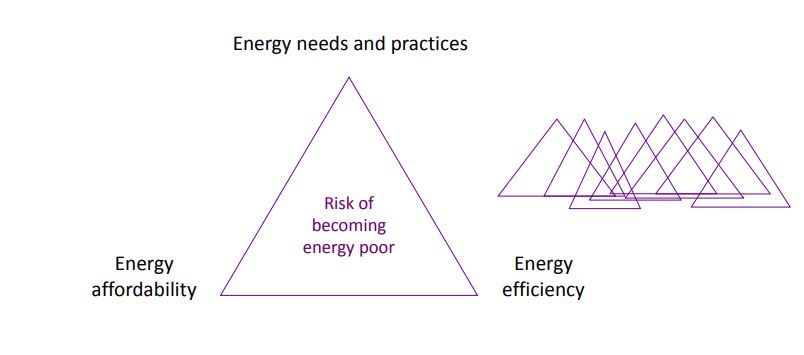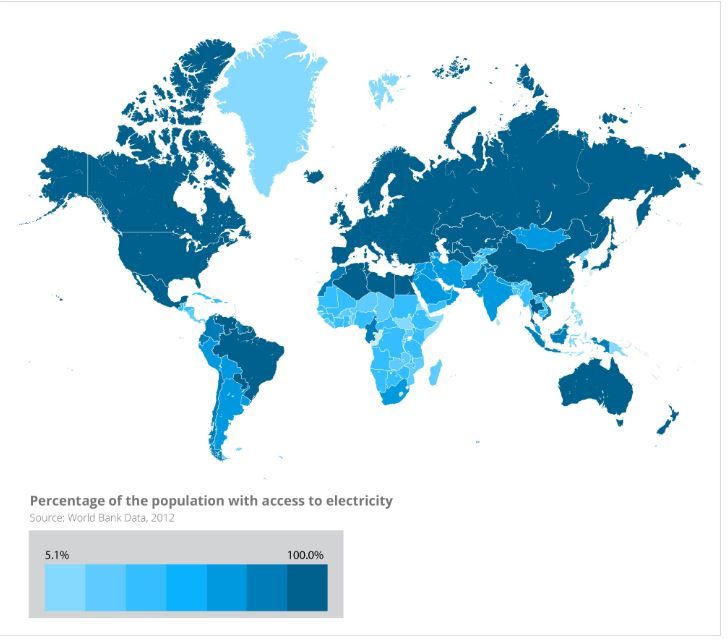Atharva Bhagwat, "Energy vulnerability through the lens of college students", Energy Research Network, Platform for Experimental Collaborative Ethnography, (June 2, 2020).
Written in the PECE framework, this multi-modal essay explores the concept of energy vulnerability through the lens of a college student and aims to define what it means to be an energy-poor college student.
Although different countries have different definitions for what it means to be "energy poor", Bouzrovski and Petrova (2015) describe energy vulnerability as the tendency to be unable to acquire sufficient levels of domestic energy to enable a materially or socially necessitated level of lifestyle.

College students, especially in the United States, are a vulnerable demographic to energy insecurity due to the high costs associated with college and a lack of active income. According to money.com, 85% of college students get some sort of financial aid. Depending on their individual and their family's financial background, students may find it difficult to live on campus (where utilities and service fees are inclusive of the cost) and thus might have to live off-campus where they have to pay utility and service fees.

A study by Robert Kelchen, using data provided by the National Post Secondary Student Aid Study, shows that less than 20% of college students live on campus where they have unrestricted access to utilities. A further 20% live with their parents, where they may or may not have access to utilities depending on their family's situation. And about 60% of college students live off-campus where they are responsible for their own utilities. This trend remains roughly the same between public and private colleges as per the study. Thus, energy vulnerability is very much a college student problem as well.
The tweet above is only one example of what college students face and is not an isolated incident either. While energy vulnerability statistics among college students are not calculated to a desirable extent, the article titled "Power to the people" states that 1 in 5 people have enough electricity to power a lightbulb and a washing machine, 3 in 5 people have only enough electricity to power a light bulb, and 1 in 5 people have neither. This means that 1.5 billion people have access to a light bulb and a washing machine, 4 billion only have the light bulb, and 1.5 billion have neither.

The above illustration from the article only shows the ability to be able to access electricity, which in itself if skewed when looked at from a global scale. This is only further diminished when vulnerable populations, like cash strapped college students, are unable to access this electricity available to them due to lack of finances. The article also quotes Jatin Nathwani, a University of Waterloo professor, who expresses that technology alone won't help this cause, but rather a change in culture will, alluding to the STS principle of Technological Determinism.
A total of 19 surveys filled out by college students who are currently seeking their undergraduate and graduate degrees and administered by the Energy Vulnerability Lab team were analysed by me. I used quantitative methods to delineate relevant entries pertaining to my target demographic from the wider survey and then performed statistical analysis on the data. Of the 19 individuals who filled out the survey, 74% were undergraduates and 26% were graduates. further, 63% identified as male or cis-gendered male, while 37% were female. The most dominant ethnicity was white, which accounted for 52% of the survey participants. Important questions that were asked include annual income, increase in expenses due to COVID-19, an increase of energy consumption due to COVID-19, enrollment in energy assistance programs, the effect of COVID-19 on housing and internet, and lastly the respondents' experience with difficulty in paying utility or other bills. One of the more interesting statistics was that 63% of respondents said their internet had slowed down after the onset of COVID-19 and this directly corresponds with the ability to perform remote work.

Another interesting data-set was the range of annual incomes, with many college students surveyed lying under the low-income threshold.
Energy Vulnerability, and specifically "internet vulnerability" is at the forefront of being a barrier to student success since education in large parts is being consumed online, even more so during the COVID-19 pandemic. It has emerged that college students struggle to afford the high cost of mobile internet plans, often being dependant on free public Wi-Fi facilities. The removal of Net Neutrality in the United States by the FCC (Federal Communications Commission) resulted in much student uproar on Twitter, with many calling out FCC Commissioner, Ajit Pai for not keeping the interests of 'broke' college students back in 2017. Although in 2020, tweets about this were virtually non-existent when analysed, a common theme of high costs of internet plans was still prevalent (as it has been on Twitter since 2011). While companies such as Comcast and Spectrum did release information about free internet access for college students during the COVID-19 pandemic, no success metric was available. An important development, in this case, is the bill proposed by Sen. Amy Klobuchar (Dem, Minn.) to make connectivity affordable and accessible for higher education students. It has gained considerable positive traction, although it is yet to be debated or passed, having been introduced only recently on May 14th. It would be a landmark bill for college students if it goes through.
...ensuring college and university students have access to high-speed internet is critical during the pandemic.
The Supporting Connectivity for Higher Education Students in Need Act would help ensure that college and university students with the greatest financial need can access high-speed internet and essential equipment, such as laptops and tablets, to help them stay connected to their schools and communities during this public health crisis.
- Sen. Amy Klobuchar (Dem. Minn.)
COVID-19 has created exceptional circumstances for college students. Colleges in the United States are touted as being equalizers for students from different walks of life. Common facilities like libraries, access to food, electricity, and generous governmental and institutional aid can mean that many students get a level playing field to pursue their academic goals in reference to their well off peers. However, because of COVID-19, college campuses had to evacuate as stay-at-home orders were implemented nationally. This caused all students to return back to their homes, where they were not subject to the same level playing field that colleges created. Students in some cases now face an environment not conducive to education due to many factors such as lack of high-speed internet required for remote learning or access to electricity among other factors such food insecurity and a lack of safe space, especially for students who are non-cis-conforming and identify as LGBTQIA+. A study by Allison Smith and Zoe Ragozeous stated that students with poorer health (physical and mental) are 5 times more likely to report grades of D and F than their peers.
COVID-19 has also resulted in lay-offs of students from their part-time roles or internships (since interns are non-essential compared to other works are the first to get the axe), and this has resulted in a lower than usual income for college students who still have bills to pay.
Problems experienced by prior generations are the ones that are being solved today and anecdotally, I believe the energy vulnerability problem faced by college students today will be worked on as they progress into leadership roles in the future.
In the past years, college students from across the country have worked on innovations or led public-movements that are aimed at improving the energy vulnerability landscape. One such youth-led organization in Atlanta (called the Metro-Atlanta Youth Energy 'MAYE' Corps) has been at the forefront of tackling the issue of energy vulnerability not only among college students but also beyond. Started by students from the Agnes Scott College, this organization provides home improvements that increase energy efficiency in households and also promotes racial and social justice. Similarly, a group of college students from Syracuse University and the State University of New York (SUNY) developed a model of a house whose utility bills will only be $2/month. Such examples only strengthen the anecdotal assumption I make.
In addition to students, faculty members- a demographic who heavily interact with college students, have also contributed to this cause. Faculty associations at the Milwaukee Area Technical College and at Temple University in Philadelphia have created programs to help college students in dire need of financial assistance to pay their utility bills, and these programs have been well received. Although a lack of institutional response from colleges to this problem does seem frustrating to me, I believe with faculty taking action, it is a step in the right direction.
In conclusion, I will say that college students do face energy vulnerability and during COVID-19, it has become intersectional to achieving academic parity and success. Institutional and governmental support is required to address this underrepresented issue, and while progress is being made, the situation is still far from an equitable state.
S, Hinckley. "In L.A., resources grow for homeless community college students". Christian Science Monitor. January 2018.
Myers, V. "Faculty create emergency funds for struggling students". American Federation of Teachers. 2018.
Onondaga Community College. "Syracuse University, SUNY Students Design Home with $2/mo Utility Bill". SUNY Blog. 2014.
Mill-Rodrigo, C. "Democrats introduce legislation to ensure internet access for college students". The Hill. May 2020.
Smith, A, Ragouzeous, Z. "Reaching The Most Vulnerable: TARGETED MENTAL HEALTH INITIATIVES ENGAGE STUDENT POPULATIONS AT RISK". Leadership Exchange. 2019.
Thompson, B. "Working to Combat Energy Inequity in Atlanta: A Reflection on the 2019 Carbon Reduction Challenge". Georgia Institute of Technology. 2019.
Casey, N. "College made Them Feel Equal. The Virus Exposed How Unequal Their Lives Are." New York Times. May 5, 2020.
Harper, N. "Power to the people: driving a revolution in affordable energy for humanity". The University of Waterloo Magazine. Spring 2016.
Analysis of responses to the EVL survey given by college students. Please see the Google Sheet for more in-depth information: https://docs.google.com/spreadsheets/d/...Read more